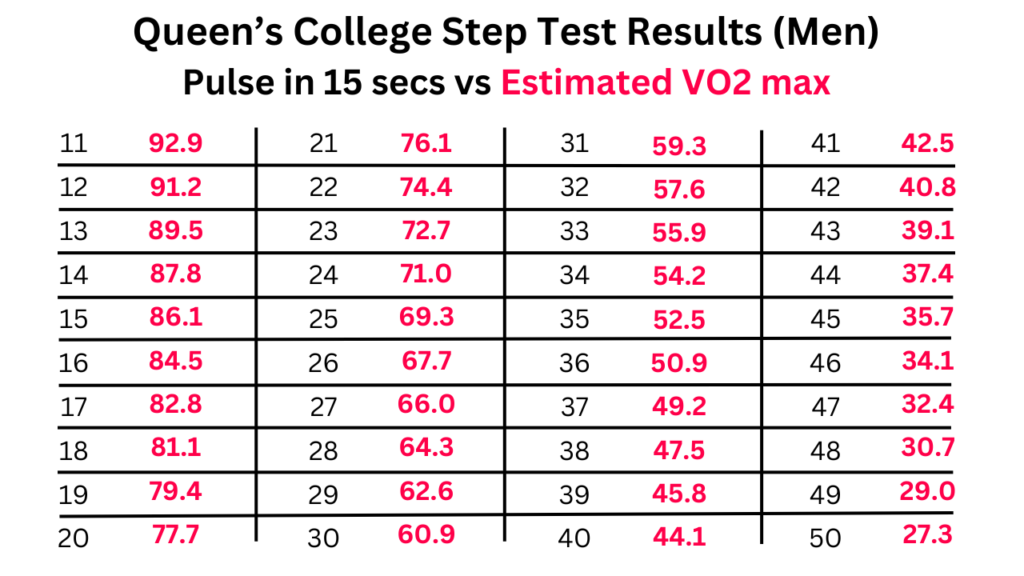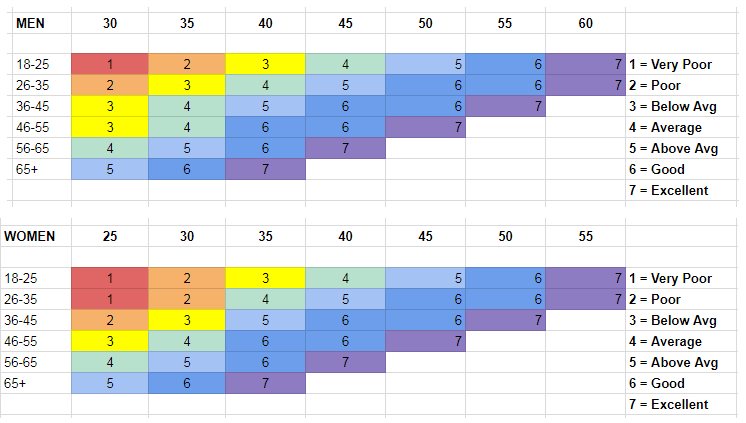VO2 max is a measure of the maximal volume of oxygen your body can use and it’s a good indicator of cardiovascular fitness. A true VO2 max test is conducted in a lab and involves exercising to failure while wearing a mask. However, there are simple tests that can provide an estimate of your VO2 max. One such example is the Queen’s College step test [1], also called the Home step test.
How to do the Queen’s College step test
This test can be done at home, provided you have the necessary equipment. You will need to step onto a 41.3cm (16.25 inch) box, with the best option for many to use a set of stairs. Two stairs in a standard household staircase is often 40-41cm. Otherwise you may need (safe!) modifications to create the appropriate height.
You will be stepping up-up-down-down at a strict tempo depending on your sex. For men, this is 96 beats per minute, and for women it’s 88 beats per minute. You can search online to find a suitable metronome, or use the one provided by Google.
The full test requires you to match the tempo for exactly 3 minutes. Once 3 minutes are completed, immediately count your heartbeats for 15 seconds.
Use the following tables to determine your estimated VO2 max from your 15 second pulse.


Below is a clip of the last 30 seconds of my step test to show you how it’s done.
What do my results mean
Your results are best compared relative to others of the same age and sex. Below is a set of normative data for VO2 max for both men and women. What constitutes “average” can vary between research studies due to the population samples they use.

At the top end, elite athletes average 55-65 ml/kg/min with endurance specialists able to reach 75-85 ml/kg/min. Cross Country Skiers are often touted as the athletes who score the highest, with some managing to score 90-95 ml/kg/min on their VO2 max tests.
At the lower end of the scale, an unfit 65 year old may start dipping under 20 ml/kg/min. This would mean walking uphill would be right at the limit of their capabilities. A VO2 max this low may start to infringe on other activities of daily living.
Tracking VO2 max over time
There is a very well established decline in VO2 max with age, and that happens regardless of fitness level. The difference is that a fitter individual will remain at a higher level relative to the unfit individual as they both age.
It’s worth taking a simple test like this once a year and making a note of your scores. People typically lose 1% of their VO2 max a year, so even if you maintain your activity levels, you will see a decline with age. Here I’ve included my results, which come from a range of different tests including the home step test.

While the literature would suggest a decline after I turned 30 in 2017, I made a conscious effort to exercise more in order to reverse that.
Your VO2 max is very much trainable if you are willing to put in the hours. This is particularly true if you are currently sedentary, which would put you more at risk as you approach 65 or older. Improving VO2 max is beyond the scope of this article, but a common routine is to do a 4 minute run followed by 4 minutes rest, and repeat that four times.
[1] Reliability and interrelationships between maximal oxygen uptake, physical work capacity and step test scores in college women. McArdle, 1972.

